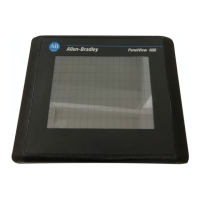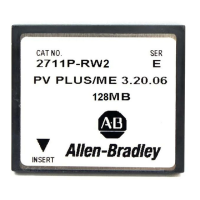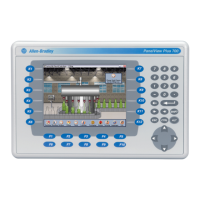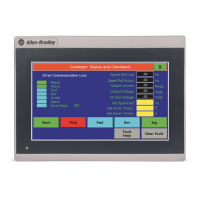12 Rockwell Automation Publication 2711P-AP006C-EN-P - November 2018
Chapter 1 Things to Know Before You Migrate
Retain Last States on Startup
PanelBuilder32 software lets you choose to retain the last states on startup for
all objects. FactoryTalk View Machine Edition (ME) software does not have
this feature.
Unsupported Characters in
Tag Names and Addresses
PanelBuilder32 software supports semicolons (;) in tag addresses; FactoryTalk
View ME software does not. Before importing your application into
FactoryTalk View ME software, change the semicolons (;) to colons (:) in the
PanelBuilder32 tag editor.
PanelBuilder32 software supports dashes (-) in tag names, FactoryTalk View
ME software does not. Before importing your application to FactoryTalk View
ME software, search the PanelBuilder32 tag editor for tag names with dashes
and duplicate the tags. Rename the tags to eliminate the dash, or replace the
dash with an underscore (_). Use the tag search function to find graphic objects
using the original tag names. Edit the objects to update the tag names.
Bit Array Tags
You can monitor bit arrays for alarm conditions in FactoryTalk View
applications but you can’t assign bit arrays to graphic objects, or write to bit
arrays. This condition means all bit array tags in your PanelBuilder32
application are converted to memory tags in the FactoryTalk View ME
application.
String Tags
At runtime, FactoryTalk View ME applications support a maximum length of
82 characters. Because PanelBuilder32 protocols support longer strings, some
alarm messages may be truncated after conversion.
Alarm Trigger Tags
Bit arrays with the Bit or LSBit trigger types are used to trigger alarm messages
in a FactoryTalk View ME application. Assigning alarm triggers to elements in
a bit array, instead of bit addresses, frees up tags in the database for other uses.
When an element of an array changes from 0 to 1, it can generate an alarm
message if a message has been created for that bit position. With the Bit trigger
type, you can generate simultaneous alarm messages, one for each element.
With the LSB trigger type, only the lowest bit position triggers an alarm:
• In a PanelBuilder32 application, the trigger value for the bit data type
ranges from 0…31.
• In a FactoryTalk View ME application, the trigger value for the bit data
type ranges from 1…32.
The number of bits in the array depends on the data type of the tag. Integer
data types, for example, return 16 bits per element, while Bit data types return
8 bits per element.
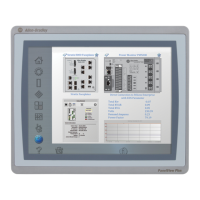
